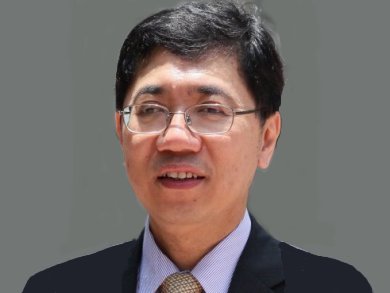Dr. Theresa Kueckmann, Editor-in-Chief for Chemistry – An Asian Journal, talks to Professor Chi-Ming Che, University of Hong Kong, about his article that was recently accepted for publication in the journal. The report describes luminescent metal complexes for use in organic light-emitting diodes.
Professor Che, you report on electroluminescent devices incorporating phosphorescent platinum complexes and iridium co-dopant. What is the main significance of your results?
We develop an approach to improve the electroluminescent performance of platinum complexes both by modifying the steric bulkiness of the Schiff base ligand scaffold and by optimizing the double light emitting layer device structure. By incorporating a bridge-head norborene moiety into the Schiff base ligand, the emission self-quenching rate constant of platinum complex is significantly decreased. Iridium complexes with wide band gaps and relatively low-lying energy levels were minutely co-doped into the electron dominant emitting layer as deep electron trap and energy transfer ladder, respectively, which led to more balanced charge carrier distribution, a broadened recombination zone, and improved energy transfer from host to emitter.
Why did you focus on these types of platinum and iridium complexes?
Transition-metal complexes can be used to harvest both singlet and triplet excitons and therefore are advantageous for achieving 100 % internal quantum efficiency. Both platinum(II) and iridium(III) are well-documented to be outstanding phosphorescent materials for OLEDs with practical applications. Currently, the efficiency and brightness of green OLEDs are good enough for industrial applications, but the performance of red and blue OLEDs in the context of color purity, efficiency, and brightness remain to be optimized. In previous work, we reported a series of platinum(II) Schiff base complexes having emission lifetimes of 1–5 μs and used these complexes to fabricate red light OLEDs. This class of platinum(II) Schiff base complexes are good candidate materials for industrial applications, as scaling up for their mass production is relatively simple.
Do you have any plans for future work extending from this study? If so, could you please provide some details?
We are working to further increase the phosphorescence quantum yield of the platinum(II) Schiff base complexes. In addition, we will also pay more attention to decreasing the operation voltage of electroluminescent devices in order to improve the device stability.
Which part of your work proved the most challenging?
Platinum(II) complexes usually adopt a planar coordination geometry that favors intermolecular ligand–ligand or metal–metal interactions, which facilitate the formation of low-lying aggregation states. These states lead to emission quenching and hence have a detrimental effect on both efficiency and color purity of the as-fabricated electroluminescent devices. Therefore, it was most challenging to suppress emission self-quenching by modification of the Schiff base ligand scaffold without negatively impacting the emission quantum yield.
How big an impact do you see your work potentially having in the area of electroluminescent devices?
Our investigation will be helpful for the design of new phosphorescent OLED materials and the optimization of electroluminescent devices. The fact that the emission self-quenching of platinum(II) Schiff base complexes can be significantly mitigated by incorporating a rigid, bridge-head norborene moiety into the ligand scaffold is encouraging. We have also demonstrated an efficient device design strategy by minutely co-doping materials with wide band gap and relatively low-lying energy level into the electron dominant emitting layer to act as deep electron trap and energy transfer ladder. We are hoping that this approach will lead to new breakthroughs in the development of practical OLED devices with industrial applications.
The article they talked about:
- Efficient Red Electroluminescent Devices with Sterically Hindered Phosphorescent Platinum(II) Schiff Base Complexes and Iridium Complex Codopant,
Liang Zhou, Chun-Lam Kwong, Chi-Chung Kwok, Gang Cheng, Hongjie Zhang, Chi-Ming Che,
Chem. Asian J. 2014.
DOI: 10.1002/asia.201402618




